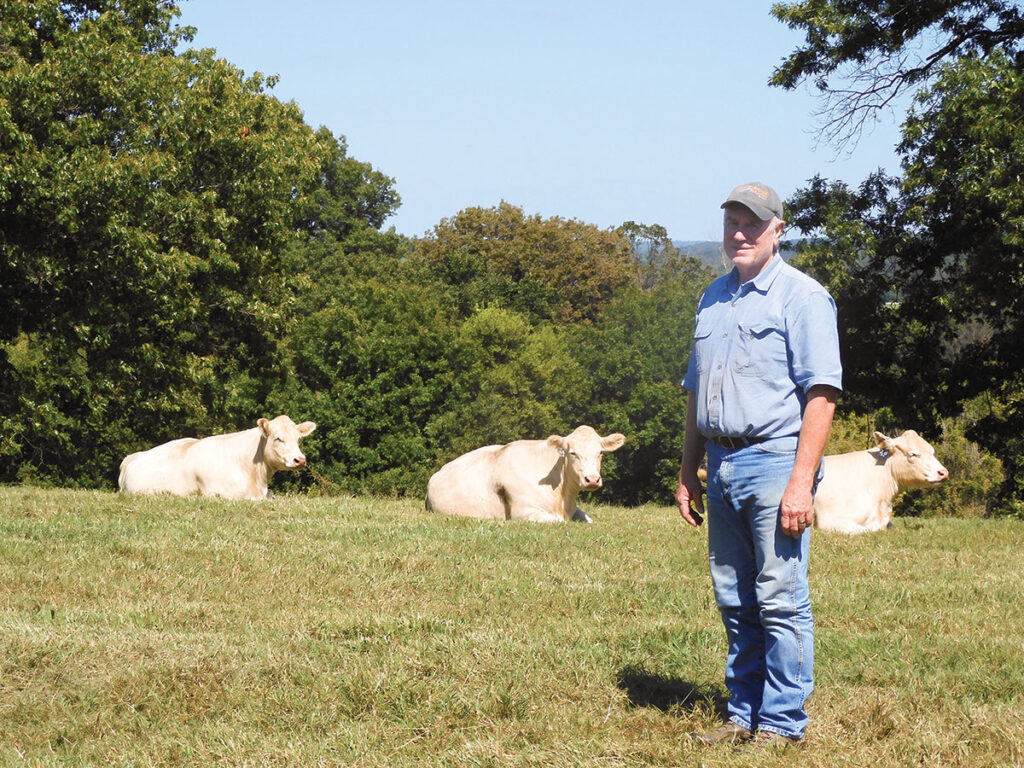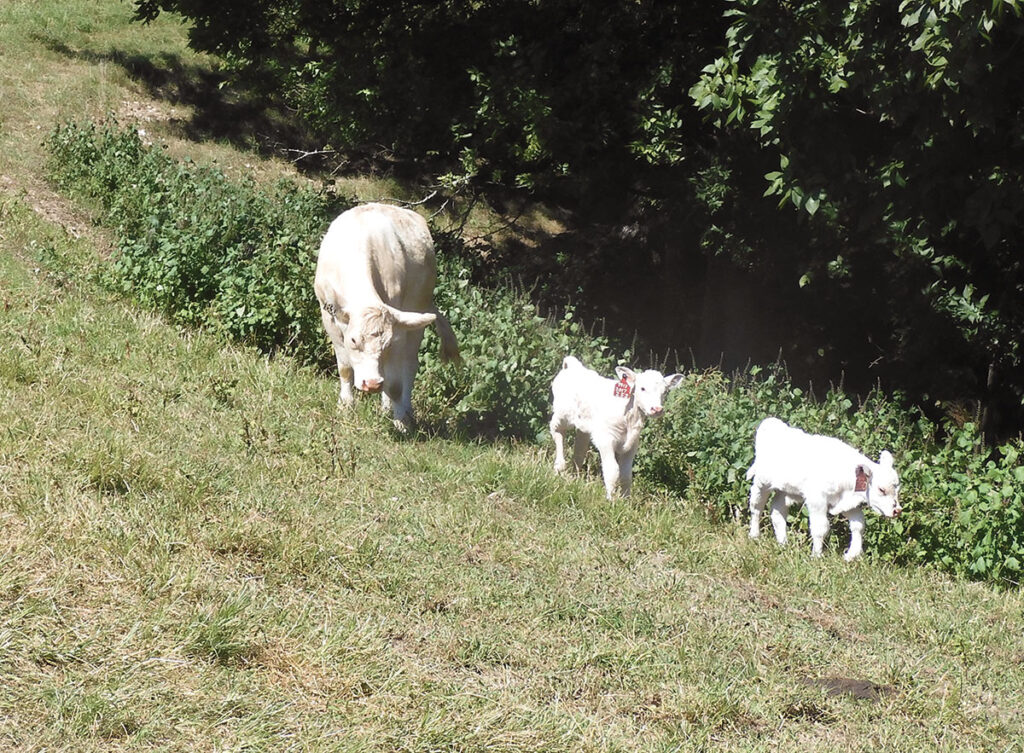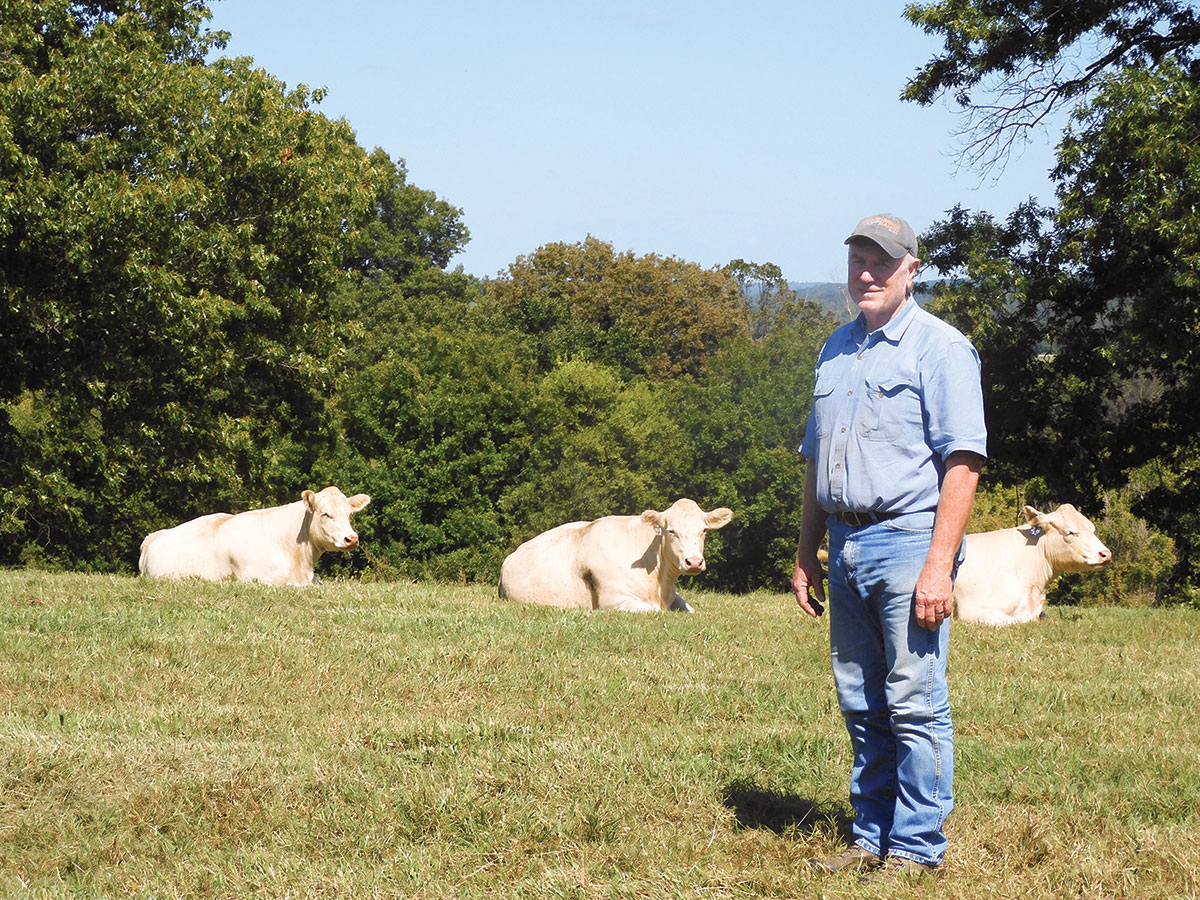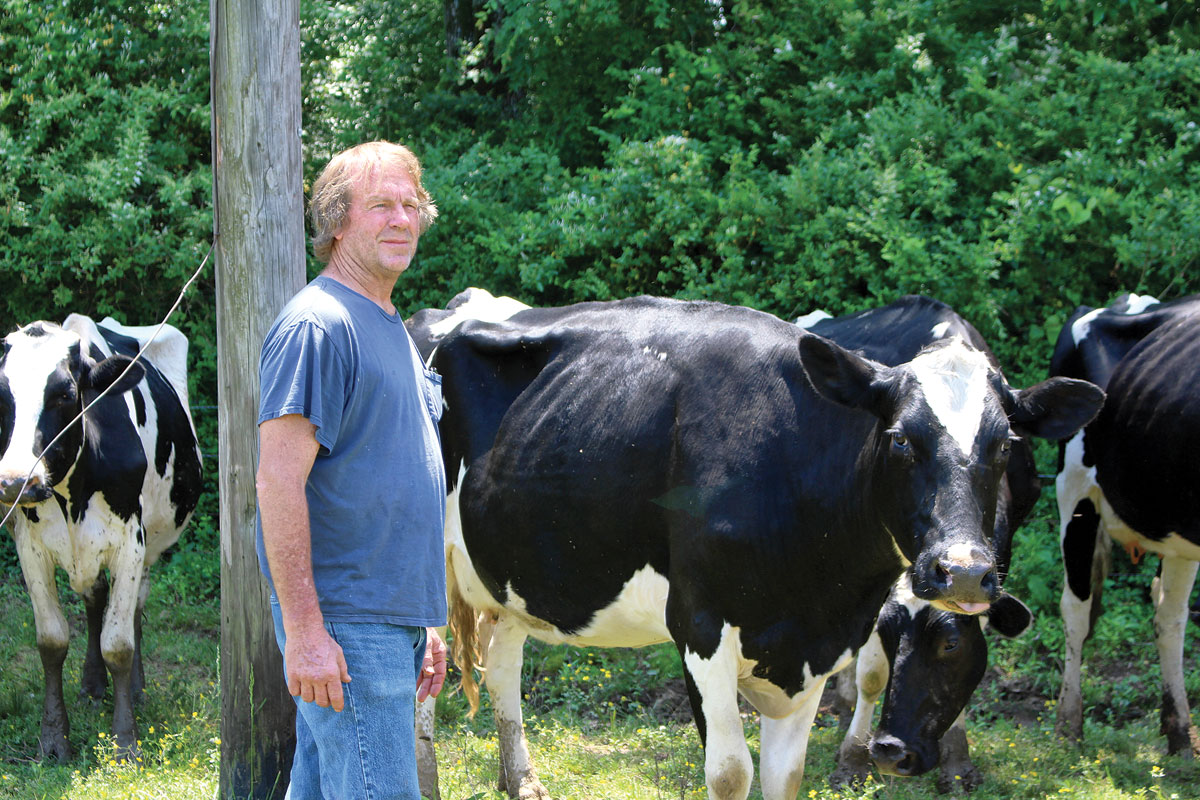
Steve Smith utilizes Charolais genetics at his Osage Ridge Ranch
TONTITOWN, ARK. – Above the Osage Creek in the Illinois River Basin is the Osage Ridge Ranch, established in 2014 by Steve and Kellye Smith two years after they married.
“When we had our first date, I made sure we had dinner out of town so I would have enough time to talk to her on the drive there and back to figure out if she might be the one,” Steve confided. “She was and establishing a new ranch was a logical step, especially considering her profession.”
Kellye, now retired, was an ophthalmologist who worked at hospitals in Springdale and Fayetteville. Steve and Kellye’s home had been in Hindsville, too far away according to hospital on-call protocols. When the Realtor showed them the property, he first took Kellye to a hillside and showed her a view that took her breath away, a perfect location for a new home. Fortunately, the land layout was equally as good. It boasted multiple springs, the Osage Creek bordering precious bottomland and numerous Ozark hills and valleys to provide herd shelter from summer heat and winter winds.
When Steve was a child, he had wonderful farming experiences and adventures with grandfather Clyde Perryman in Salem, Ark., As a 5-year-old, he loved feeding the hungry bottle calves. Soon came the grave responsibility of leading a haltered young calf to a pen. The small, but sturdy calf dragged young Steve. In protest though, the determined youngster didn’t let go. Early on, Steve’s father Robert tried to discourage Steve from becoming a cattleman, pointing to dubious financial rewards. However, Steve didn’t listen and appreciates that the cattle let him vent and yell in frustration but always love him…when he has a bucket of grain. His was and is a country soul.
Osage Creek Ranch is Steve’s third cattle location. He appreciatively remembers Willard Walker introducing him to Charolais in the early 1990s, a time when the breed was very large but beginning to modify size, something that made sense to Steve. Charolais became and are his breed.
Following the crowd does not suit Steve so everyone else raising black enhanced Charolais attractiveness. He also recognized the breed’s potential, especially a hybrid vigor that produces calves with exceptional daily weight gain meaning more pounds and more money when they’re sold. According to Steve, today many use Charolais to crossbreed with red and black Angus calves buyers appreciate due to their weight gain/food efficiency ratio.
The Smith herd is comprised of 75 to 80 cows and three breeding bulls, including one for first-calf heifers. Steve arrived at that number as the maximum his 340 acres can handle while maintaining peak grass conditions. Part of making that work is purchasing most of his hay. Other land management practices include fertilizing in the spring with both chicken litter and commercial fertilizer. To prevent runoff pollution of the creek and later the Illinois River, Steve keeps careful records. Another is adding seed to the fertilizer, as needed. Steve also pays close attention to forage quality and rotates his herd accordingly. When rains are plentiful, he rotates more frequently and is sometimes forced during dry periods to move a herd to land not completely recovered from the last cycle but with more to offer than the current pasture. Finally, he tests his Bermuda/fescue pastures to determine exactly how much additional supplementation they need rather than guessing and taking an unnecessary financial risk. He grains his herd to promote good growth and potential.

Breeding also has its own protocols with Steve continually pushing and refining bloodlines. First, he matches bulls and cows to compensate for genetic variations and also purchases replacement bulls because he is not a fan of line breeding. Another practice is to AI at least half of his females while also using embryo transplant.
“ET is an expensive process and takes only about half of the time,” Steve said. “The profitability is probably not there so using ET does not make economic sense. However, the challenge of creating a ‘super’ bull or heifer nips at the ego until I believe I can figure out what others cannot though obviously, I cannot,” Steve finished with a grin.
Careful management of the heard health and productivity is essential. To that end, Steve retains a sufficient number of heifers to replace aging cows or a cow who has skipped a season unless, she an exceptional female. She is then moved to the spring calving herd for one more try.
Steve finds fall calving works best for him. He has observed his cows having lighter birthweights in the fall and therefore fewer birthing issues. Fall/winter grass quality also significantly decreases the likelihood of calves developing scours. A final and financially important advantage is being able to sell bull calves at 18 months rather than 2 years, saving significant input costs.
Steve creep feeds calves until weaning when he separates the heifers and bull calves. During that separation, he culls the bottom tier of males and females and sends them to the sale barn so that his customers receive only the best breeding stock. He pushes a bit more grain to the bull calves than the heifers so his bull calves are ready at 18 months and his heifers will breed well because he controls their fat level. Steve worms twice a year with varying products to prevent resistance and treats flies by spray or pour on but only as needed. Perhaps most importantly, all cattle are vaccinated twice a year.
“Through the years I have become very disciplined, especially in terms of vaccinations because if I don’t, something always goes wrong,” Steve explained.
Marketing for a breeding producer is different than one for the commercial market. Steve sells at breed sales from Kansas City to Dallas and from Oklahoma City to Memphis, with some sales being local and by private treaty. In addition to selling bulls at 18 months, heifers are sold between 2 and 2 1/2 sometimes as bred heifers.
Steve has a habit of picking up a few acres here and there when they connect to his land but is rapidly approaching a point where he wants more time for other things.
“I love to bow hunt and now love fishing when I didn’t have the patience for it before,” Steve said. “Kellye and I are also raising our granddaughter, a delightful use of our time. We have taken care of her most of the time since she was 2. Now 11 and in the sixth grade, Blakely is very busy and thinks the cattle are pretty but wants little to do with them. While I may be wanting to slow down in other ways, she keeps us young and looking towards the future.”







